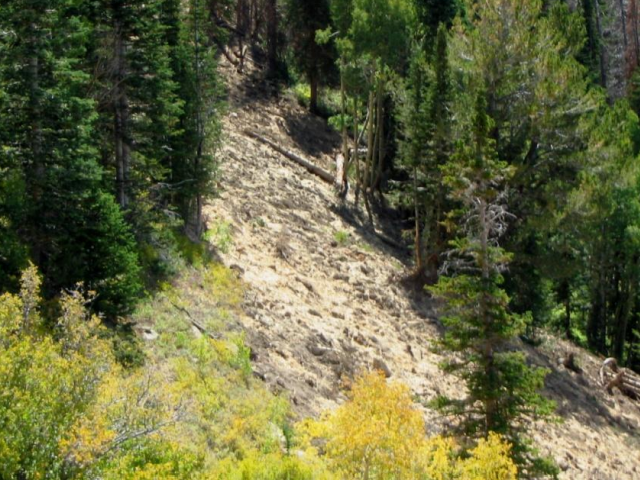Abstract
Soil erosion is a significant risk during and after grading operations on mine and pipeline sites. A range of materials are commercially available to reduce the erosive effects of wind and/or rainfall, including agricultural straw, hydraulic mulches, and rolled erosion blankets. Each of the conventional materials have limitations sufficient enough that federal agencies supported development of a new material beginning in 2002 that would be long-lasting, wind resistant, naturally weed-free, and could be transported and applied using conventional hay and straw methods.
Three years of research and development resulted in a wood-strand material that is optimized for technical performance and ease of application. More than 18,000 tonnes of the wood strand material has been used on a range of road, post-wildfire, watershed protection, streambank and other uses across federal, state, and private lands in the western United States.
Among the federally sponsored projects have been many abandoned mine lands (AML) sites. When permitting or contracting new mine and pipeline projects, Federal land agencies, including the Bureau of Land Management and the USDA Forest Service, have recommended or specified the new material or specified that erosion control materials used must meet its technical performance. Since its commercial introduction in 2005, wood-strand erosion control mulch has been used on more than fifteen mine and pipeline projects in eight western states as well as thirty-five large post wildfire rehab projects.
This paper reviews the science and design process that led to the technical features of the wood-strand mulch that include viable wind and water erosion control while providing additional benefits of being weed-free, long-lasting, and wind resistant and looks at two real situations where the mulch was a significant contributor to the success of the treatments.
About the Publication
Dooley, J. H. and M.C. Perry (2016). Journal of Environmental Solutions for Oil, Gas, and Mining. Auburn, WA, Forest Concepts.
Read the full article in PDF format:

